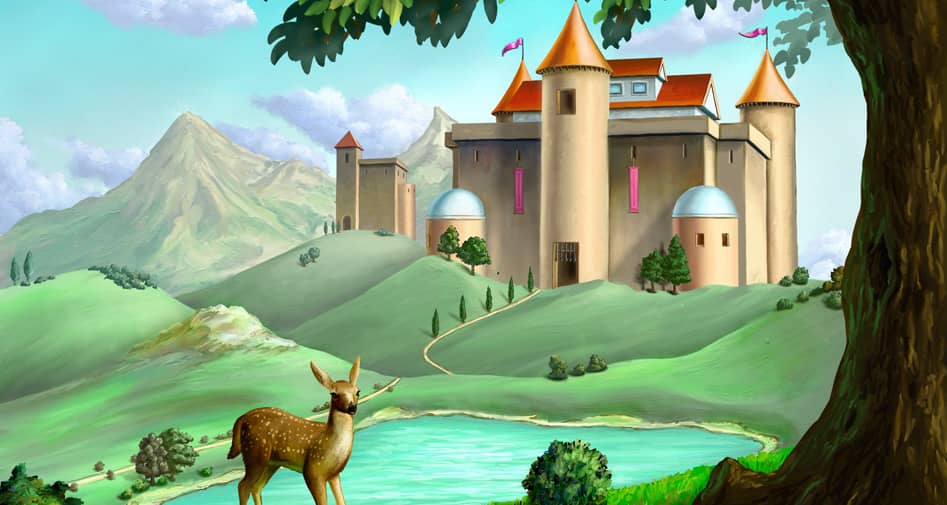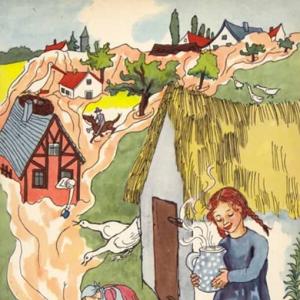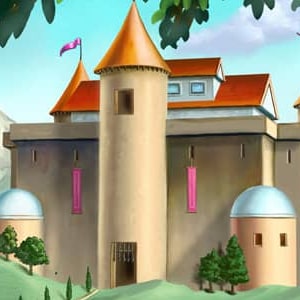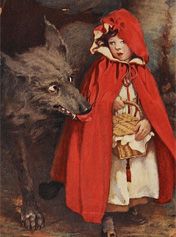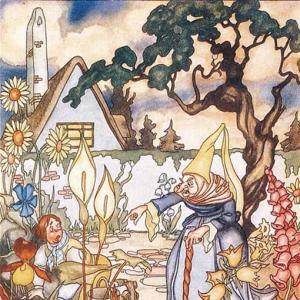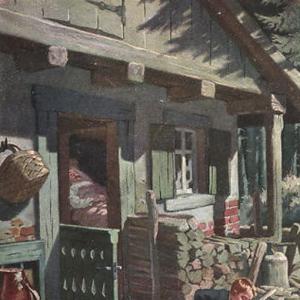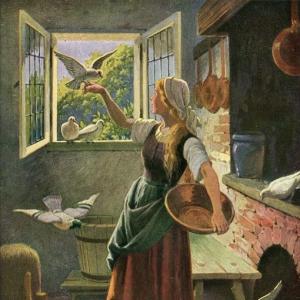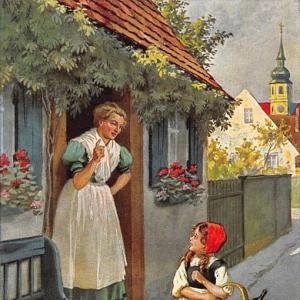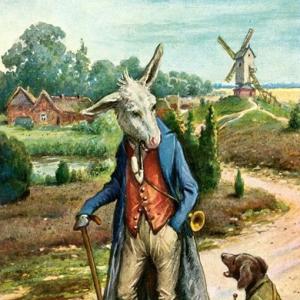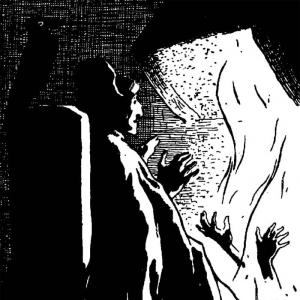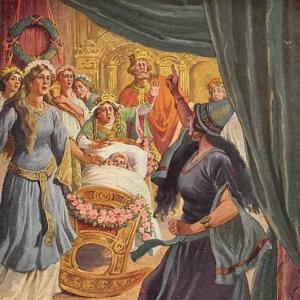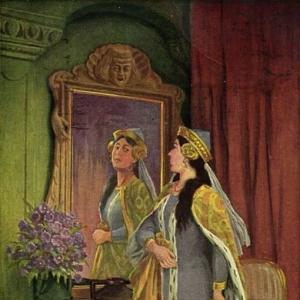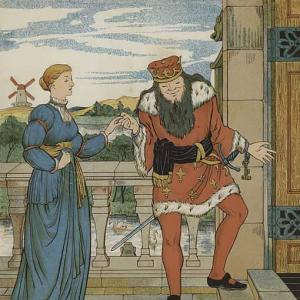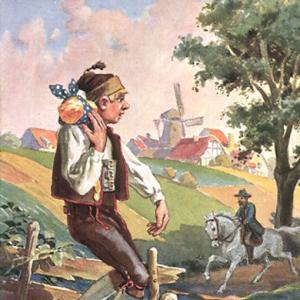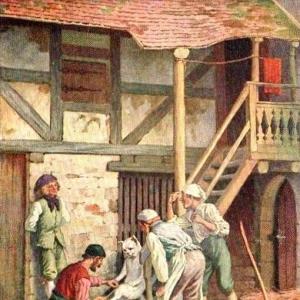Reading time for children: 6 min
The Flea, the Grasshopper, and the Skipjack once wanted to see which of them could jump highest; and they invited the whole world, and whoever else would come, to see the grand sight. And there the three famous jumpers were met together in the room.
„Yes, I’ll give my daughter to him who jumps highest,“ said the King, „for it would be mean to let these people jump for nothing.“
The Flea stepped out first. He had very pretty manners, and bowed in all directions, for he had young ladies‘ blood in his veins, and was accustomed to consort only with human beings; and that was of great consequence.
Then came the Grasshopper: he was certainly much heavier, but he had a good figure, and wore the green uniform that was born with him. This person, moreover, maintained that he belonged to a very old family in the land of Egypt, and that he was highly esteemed there. He had just come from the field, he said, and had been put into a card house three stories high, and all made of picture cards with the figures turned inwards. There were doors and windows in the house, cut in the body of the Queen of Hearts.
„I sing so,“ he said, „that sixteen native crickets who have chirped from their youth up, and have never yet had a card house of their own, would become thinner than they are with envy if they were to hear me.“
Both of them, the Flea and the Grasshopper, took care to announce who they were, and that they considered themselves entitled to marry a Princess.
The Skipjack said nothing, but it was said of him that he thought all the more; and directly the Yard Dog had smelt at him he was ready to assert that the Skipjack was of good family, and formed from the breastbone of an undoubted goose. The old councillor, who had received three medals for holding his tongue, declared that the Skipjack possessed the gift of prophecy. One could tell by his bones whether there would be a severe winter or a mild one; and that’s more than one can always tell from the breastbone of the man who writes the almanac.
„I shall not say anything more,“ said the old King. „I only go on quietly, and always think the best.“
Now they were to take their jump. The Flea sprang so high that no one could see him; and then they asserted that he had not jumped at all. That was very mean. The Grasshopper only sprang half as high, but he sprang straight into the King’s face, and the King declared that was horribly rude. The Skipjack stood a long time considering; at last people thought that he could not jump at all.
„I only hope he’s not become unwell,“ said the Yard Dog, and then he smelt at him again.
„Tap!“ he sprang with a little crooked jump just into the lap of the Princess, who sat on a low golden stool.
Then the King said, „The highest leap was taken by him who jumped up to my daughter. For therein lies the point; but it requires head to achieve that, and the Skipjack has shown that he has a head.“
And so he had the Princess.
„I jumped highest, after all,“ said the Flea. „But it’s all the same. Let her have the goose-bone with its lump of wax and bit of stick. I jumped to the highest; but in this world a body is required if one wishes to be seen.“
And the Flea went into foreign military service, where it is said he was killed.
The Grasshopper seated himself out in the ditch, and thought and considered how things happened in the world. And he too said, „Body is required! body is required!“ And then he sang his own melancholy song, and from that we have gathered this story, which they say is not true, though it’s in print.
 Learn languages. Double-tap on a word.Learn languages in context with Childstories.org and Deepl.com.
Learn languages. Double-tap on a word.Learn languages in context with Childstories.org and Deepl.com.Backgrounds
Interpretations
Adaptions
Summary
Linguistics
„The Jumper“ is a lesser-known fairy tale written by Danish author Hans Christian Andersen, who is best known for his classic stories such as „The Little Mermaid,“ „The Ugly Duckling,“ and „The Snow Queen.“ Andersen’s works often delve into themes of identity, personal growth, and societal values.
Born in 1805, Andersen grew up in Odense, Denmark, in humble circumstances. Throughout his life, he pursued a career in writing, eventually finding success with his fairy tales, which were inspired by traditional folklore as well as his own life experiences and imagination. His stories are often characterized by elements of magic, moral lessons, and complex emotions.
„The Jumper“ was first published in 1845 as part of Andersen’s collection „New Fairy Tales. First Volume. Second Collection.“ Although not as famous as some of his other works, „The Jumper“ offers a satirical perspective on societal norms, self-promotion, and the role of appearances in determining success.
Andersen’s fairy tales have been translated into numerous languages and have been adapted into various media, including films, plays, and ballets. His work has had a lasting influence on children’s literature and popular culture, with many of his stories continuing to resonate with audiences today.
There are several interpretations that can be drawn from „The Jumper“ by Hans Christian Andersen:
The importance of appearances: The story highlights the significance of appearances and physical presence in society. The Flea’s extraordinary jump goes unnoticed due to his small size, while the Grasshopper’s performance is marred by his perceived rudeness. The Skipjack’s modest jump lands him in the most important place, securing his victory. This demonstrates that society often values outward appearances and what can be seen over true talent or ability.
Intelligence over physical prowess: The King awards the prize to the Skipjack because he uses his intelligence to jump into the Princess’s lap, demonstrating that he understands the purpose of the competition. This suggests that cleverness and strategic thinking are sometimes more valuable than sheer physical ability.
The subjectivity of success: Each creature’s perception of success varies – the Flea believes he has jumped the highest, the Grasshopper takes pride in his family heritage and singing, and the Skipjack relies on his cunning. The story demonstrates that success can be subjective and is often defined by the values and beliefs held by the individual and society.
The limitations of self-promotion: Both the Flea and the Grasshopper boast about their talents and worthiness to marry the Princess. However, their self-promotion is not enough to secure them the victory. This suggests that boasting or relying solely on one’s perceived merits may not always lead to success, and sometimes humility and quiet confidence, as demonstrated by the Skipjack, can be more effective.
Social commentary: Andersen’s tale can be seen as a critique of societal norms and values. The tale exposes the superficiality and fickleness of the society that often prioritizes appearances, pedigree, and social standing over genuine talent and worthiness. The fates of the Flea and the Grasshopper, who are not rewarded for their abilities, underscore the potential injustices that can arise from such a system.
„The Jumper“ by Hans Christian Andersen has been adapted in various forms, including:
Stage adaptations: „The Jumper“ has been adapted for the stage as a play or musical. For example, the story has been adapted as a ballet by Russian composer Boris Tishchenko, as well as a musical by composer and playwright Leslie Bricusse.
Film adaptations: „The Jumper“ has been adapted for film and television multiple times, including a 1955 Soviet film adaptation called „The Brave Jump“ and a 2009 Italian television film adaptation called „Il saltimbanco“.
Literary adaptations: The story has been adapted into various children’s books and illustrated storybooks, including „The Jumper: A Fairy Tale Retold“ by Caroline P. Goodwin and „The Jumper: A Story“ by David Mamet.
Musical adaptations: „The Jumper“ has been adapted into songs and musical pieces, including „The Jumper“ by UK band Suede, which tells a modern retelling of the story through the eyes of a young man struggling with depression and suicidal thoughts.
Animated adaptations: The story has been adapted into animated films and television shows, including a 1971 episode of the Japanese animated series „Tales of Andersen“ and a 1991 episode of the British animated series „The World of Peter Rabbit and Friends“.
Overall, „The Jumper“ has inspired numerous adaptations across various mediums, showcasing the enduring popularity and relevance of Andersen’s timeless fairy tale.
„The Jumper“ is a fairy tale by Hans Christian Andersen about a competition between three creatures – the Flea, the Grasshopper, and the Skipjack – to determine who can jump the highest. The King, wanting to reward the winner, offers his daughter’s hand in marriage to the one who jumps highest.
The Flea is a creature of fine manners, boasting about its human connections. The Grasshopper, wearing a natural green uniform, claims to be from an esteemed Egyptian family and prides himself on his singing abilities. Both believe they are worthy of marrying a princess. The Skipjack remains silent, but it is rumored that he has the power of prophecy.
When the competition begins, the Flea jumps so high that no one can see him, leading some to accuse him of not jumping at all. The Grasshopper jumps only half as high but directly into the King’s face, which the King deems rude. The Skipjack takes his time and jumps into the Princess’s lap, prompting the King to declare him the winner because he jumped to the most important spot and demonstrated intelligence.
Despite feeling wronged, the Flea goes on to join the foreign military service and is rumored to have been killed. The Grasshopper reflects on the competition, realizing that having a physical presence is necessary to be acknowledged in the world. The tale is said to be gathered from the Grasshopper’s melancholic song, even though its truth is questioned, it has been put into print.
Hans Christian Andersen’s „The Jumper“ is a whimsical fairy tale that uses anthropomorphized insects—a flea, a grasshopper, and a skipjack—to explore themes of vanity, merit, and the perception of success. Through a linguistic analysis of the tale, we can discern several key elements that contribute to its narrative structure and thematic depth.
Language and Tone
The tale employs a playful and humorous tone, underscored by the absurdity of insects competing for a princess’s hand in marriage. Andersen uses elevated language to describe the insects, attributing human-like qualities and social statuses to them. This anthropomorphism serves to satirize human behavior, particularly the societal obsession with pedigree and superficial achievements.
Character Descriptions
The Flea: Described with „very pretty manners“ and a sense of aristocracy due to „young ladies‘ blood in his veins,“ the flea represents vanity and self-importance. His claim to nobility has humorous undertones, as it is based on something as trivial and grotesque as the blood he consumes.
The Grasshopper: With his „good figure“ and „green uniform,“ he symbolizes pretension and boastfulness. His assertion of belonging to an old Egyptian family adds a layer of irony, as it mocks the notion of inherited prestige.
The Skipjack: Initially silent and unassuming, the skipjack becomes the surprising hero. His characterization as a „goose-bone with its lump of wax and bit of stick“ reflects humility, yet he is ultimately the one to succeed by landing in the princess’s lap.
Themes and Symbolism
Merit vs. Appearance: The story addresses the theme of true merit versus perceived ability. The flea’s invisible jump and the grasshopper’s intrusive leap contrast with the skipjack’s strategic jump, suggesting that genuine achievement often goes unnoticed or is undervalued compared to ostentatious display.
Perception of Success: The skipjack’s victory demonstrates the importance of perception in defining success. His ability to land in the princess’s lap—not the height of the jump—earns him the prize. This outcome highlights the role of wit and timing over sheer skill or nobility.
Social Commentary: Andersen critiques societal norms that prioritize lineage and appearance over substance. The king’s decision emphasizes practicality and outcome rather than spectacle, subtly mocking aristocratic values.
Structural Elements
The narrative follows a linear structure with a clear progression from introduction, through complication with the jumping contest, to resolution with the princess’s marriage. This simplicity allows Andersen to focus on the character sketches and the moral of the story, creating a clever allegory of human foibles.
Conclusion
„The Jumper“ uses playful language, vivid characterizations, and ironic humor to explore deeper themes related to social status, perception, and genuine merit. Andersen’s linguistic choices highlight the absurdity of valuing surface appearances over intrinsic qualities, making the tale both entertaining and thought-provoking. Through his anthropomorphized characters, he delivers a timeless critique of human nature and societal values.
Information for scientific analysis
Fairy tale statistics | Value |
|---|---|
| Translations | DE, DE, EN, DA, ES, FR, IT, NL |
| Readability Index by Björnsson | 32 |
| Flesch-Reading-Ease Index | 81.2 |
| Flesch–Kincaid Grade-Level | 6.5 |
| Gunning Fog Index | 9 |
| Coleman–Liau Index | 8.4 |
| SMOG Index | 8.6 |
| Automated Readability Index | 7.2 |
| Character Count | 3.594 |
| Letter Count | 2.752 |
| Sentence Count | 36 |
| Word Count | 669 |
| Average Words per Sentence | 18,58 |
| Words with more than 6 letters | 90 |
| Percentage of long words | 13.5% |
| Number of Syllables | 844 |
| Average Syllables per Word | 1,26 |
| Words with three Syllables | 32 |
| Percentage Words with three Syllables | 4.8% |
